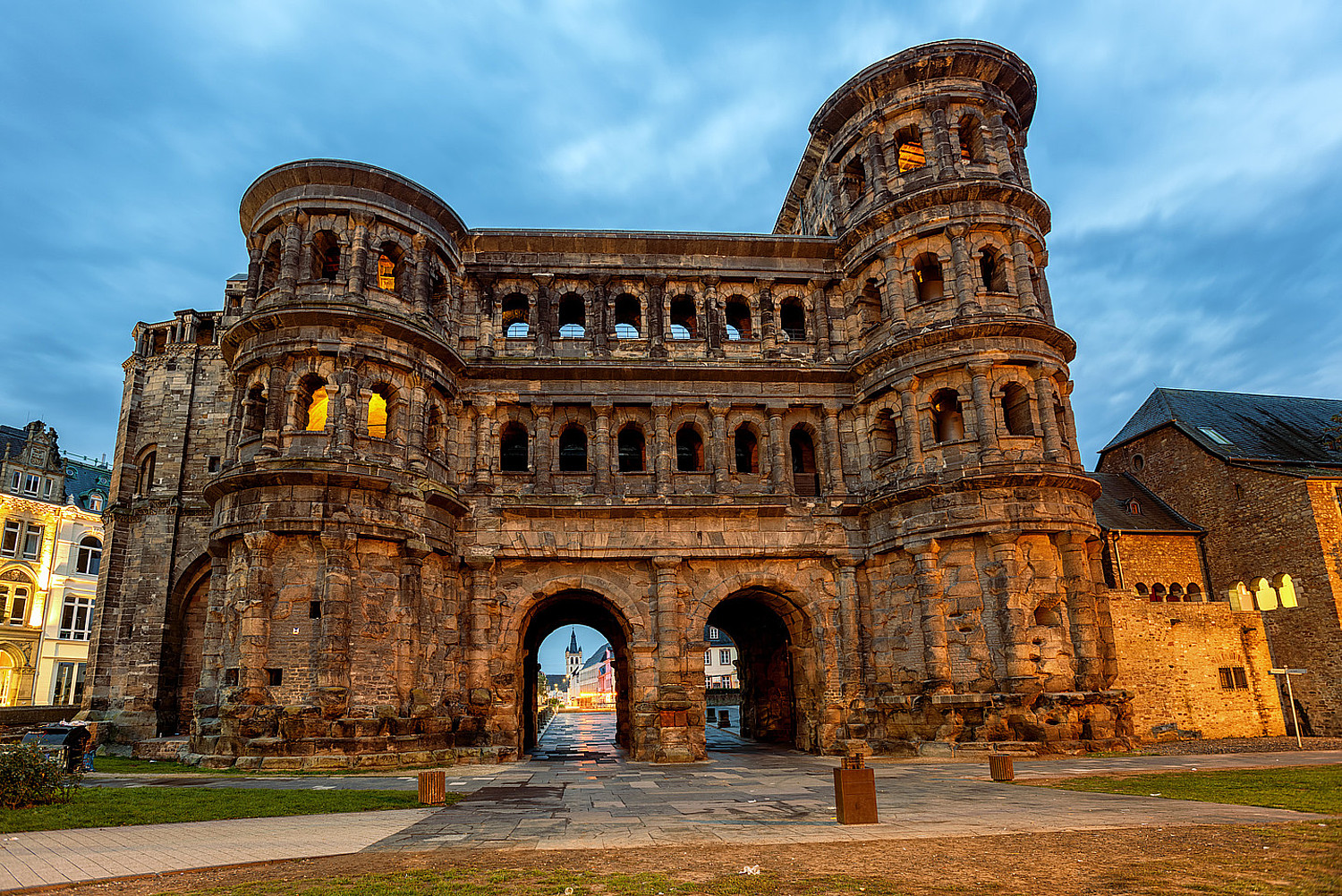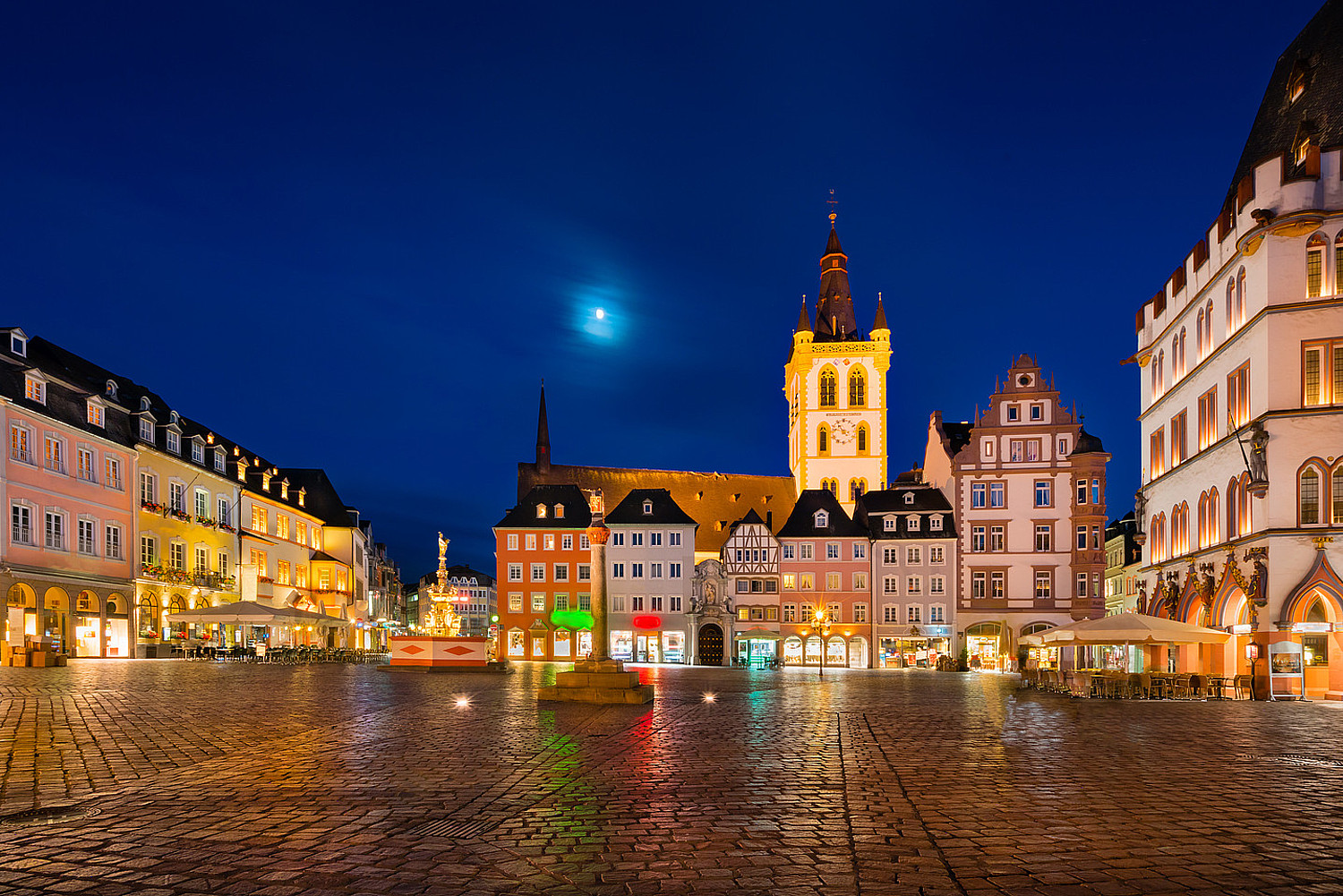Location
Trier is the oldest city in Germany with more than 2000 years of history. On the other hand, Trier is also a young-at-heart city with a future, geographically conveniently located in the "heart of Europe".
"Augusta Treverorum", today's Trier, was founded in 17 BC by the Romans under Emperor Augustus near a tribal sanctuary of the Celtic Treverians. In 293, Emperor Diocletian named the city, then called Treviris, the Roman imperial residence and capital of the Western Roman Empire. Conquered by the Franks in the 5th century, Trier became part of the East Frankish German Empire in the Carolingian division of the empire in 870. In the 12th century, the archbishops of Trier also became electors. They made Trier the capital of their electoral state, which experienced periods of high prosperity and deep decline until its dissolution at the turn of the 18th and 19th centuries. After a short period in French possession, Trier became part of Prussia in 1815 and, after the founding of the Federal Republic of Germany in 1949, of the federal state of Rhineland-Palatinate.
Today, Trier, with a population of about 110,000, is the upper center of the former administrative district of Trier, an episcopal and university city with more than 22,000 students.
Economically, Trier is the center of the wine-growing region on the Moselle, Saar and Ruwer rivers. It is also the location of well-known companies, some of them world-famous, in the food and luxury food industry, the textile industry, precision engineering, the building trade and arts and crafts. On the Moselle shipping route there is an industrial and transshipment port as well as a freight traffic center. Trier is a shopping center for the Trier region and neighboring countries.
From a tourist point of view, Trier is a varied destination for guests from all over the world, a popular conference and congress center, a unique vacation and recreation resort. Trier is the starting point for trips to the Moselle and the Saar, to the Eifel and the Hunsrück, as well as to the neighboring countries of Luxembourg, Belgium and France. The architectural monuments are stone witnesses from the Roman and electoral periods. Both the Porta Nigra, the Imperial Baths, the Amphitheater, the Barbara Baths, the newly excavated Cattle Market Baths and the Roman Bridge over the Moselle River still show us today the stately dimensions of a once magnificent Roman city. The many guests who visit the city year in and year out are enchanted by the unique ambience, which allows the old and the new to intertwine in a charming way.
The Tourist-Information Trier advises you in all touristic questions.
Culturally, Trier is an open-air museum of European architecture with buildings from the Roman, Romanesque and Gothic periods as well as the Renaissance, Baroque and Classicism. For centuries, the city has been the center of the Moselle region. In addition to a university and a college, it is home to the European Academy of Fine Arts and the Academy of European Law. Trier is rich in cultural institutes and schools.
In terms of sports, the city offers the opportunity to practice physical fitness in over 100 gymnastics and sports clubs. Many sports benefit from the city's favorable landscape. Both water sports and sports disciplines that depend on extensive terrain find ideal conditions. The European Academy of Rhineland-Palatinate Sports has been located in Trier since 1994. The Mosel Stadium is the home ground of the traditional club SV Eintracht Trier 05, which last belonged to the Second German Soccer League in 2005. The Gladiators Trier (men's basketball, ProA league) and the Bundesliga team DJK/MJC Trier (women's handball) play in the Arena Trier, which opened in 2003.
Source: https://www.trier.de/leben-in-trier/trier-auf-einen-blick/



